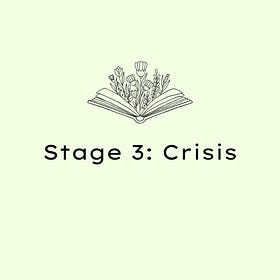🚸 Invisible Needs: Identifying the “Missed” Kids
How to spot the children with hidden SEMH needs who slip under the radar in schools.
👋 Welcome to SEMH Education
I post weekly strategies and insights for professionals supporting children with social, emotional, and mental health (SEMH) needs.
I’m Kieran, a former teacher and current Education Officer. Each week, I share evidence-informed tools, practical advice, and real-world reflections to help you create safer, more inclusive learning environments.
📌 In this post: Supporting the children who often go under the radar.
💬 Like what you’re reading? Tap the ♥️ or leave a comment, it helps others find this too!
📥 Not subscribed yet? Join 550+ others for weekly SEMH support, straight to your inbox.
👀 The Children We Don’t See
Every school can picture the “loud” pupils, the ones whose behaviour fills incident logs, whose names come up in staff meetings, and whose needs are the most pronounced.
But what about the quiet ones?
Across classrooms, there are children whose social, emotional, and mental health (SEMH) needs are invisible. They don’t disrupt lessons, they don’t attract referrals, and they rarely make the “top ten” behaviour lists. Yet their struggles are just as real, and often, far more overlooked.
The danger? These children risk slipping through the cracks, only for their needs to emerge later, sometimes in crisis.
🔍 What Do Invisible Needs Look Like?
Not all SEMH needs present as challenging behaviour. Some pupils show their distress in ways that are easy to miss:
Withdrawal: Avoiding eye contact, staying silent in class, keeping to themselves at break times
Masking: Copying peers to “fit in” while feeling anxious or disconnected inside
Over-compliance: Doing everything asked without question, often driven by fear of failure or upsetting adults
Physical symptoms: Stomach aches, headaches, tiredness, or regular trips to the medical room
Work avoidance in disguise: Appearing “quietly compliant” while producing very little academically
These children may be working twice as hard emotionally just to hold it together, but because their behaviour doesn’t disrupt others, their needs remain unseen.
📚 Policy Context: Where Do They Fit?
The SEND Code of Practice (2014) is clear: pupils with SEMH needs are entitled to support through the graduated approach (assess–plan–do–review). However, schools often prioritise visible behaviour when considering SEMH.
Ofsted’s focus on inclusive practice also highlights the need to show how schools meet the needs of all learners, not just the most disruptive.
🛠️ Practical Strategies for Schools
So how can schools spot and support the children with invisible SEMH needs? A few starting points:
Use soft data as well as hard data
Attendance and attainment are important, but staff observations, parent feedback, and pupil voice often highlight hidden struggles.Create safe spaces for disclosure
Quiet pupils may not speak up in groups. Systems like worry boxes, check-in cards, or trusted adults for 1:1 time can give them a voice.Train staff to notice subtle cues
All staff, not just SENCOs, should be aware of less obvious SEMH signs, like masking, perfectionism, or physical complaints linked to anxiety. All staff here includes lunchtime supervisors, admin staff and site-team staff.Ensure the SEND Register reflects reality
If a child is receiving sustained SEMH support through the graduated approach, they should be included on the SEND Register, even if their needs are not disruptive.
💡 A Reflective Takeaway
The loudest children aren’t always the ones most in need. Some pupils are carrying invisible struggles that demand just as much attention, compassion, and support.
👉 Next time you scan your classroom, don’t just look for the behaviour that shouts. Ask yourself: who is quietly slipping under the radar?
By shining a light on these “missed” kids, schools can move closer to true inclusion, where every child’s needs, visible or invisible, are recognised and met.
✨ Takeaway:
Invisible SEMH needs are real. If schools only respond to the pupils who shout loudest, the quietest children will remain unsupported. Our job is to notice, to ask, and to act, before their needs turn into crises.
📬Did You Miss These?
🔬 Restorative Practice That Isn’t Just Lip Service📝
In this post, we’ll go beyond the buzzwords and tick-box approaches. I’ll share:
📜 Realistic scripts to guide restorative conversations.
🧠 A printable visual guide to repair for pupils and staff.
🧑🏫 Staff CPD prompts to support meaningful rollout.
⚖️ Links to DfE and Ofsted expectations around behaviour and inclusion.
✨ Reflective challenges to shift your school culture, not just your language.
🔬 Stage 3: Crisis: When the Storm Hits🌋 📝
What this might look like:
Explosive actions: screaming, swearing, hitting, throwing objects
Flight responses: bolting from the classroom, hiding under tables
Shutdowns: frozen posture, going mute, rocking, dissociation
Panic: intense sobbing, hyperventilating, shaking
Loss of language or comprehension: blank stares, unresponsive to voice
🔬Alternative Provision: When, Why & How to Use It Well📝
🗓️ A deep dive into what, when, why, and how to arrange Alternative Provision (AP)
⚠️ Breakdown of common mistakes schools make (e.g. lack of assessments, poor communication)
🧠 Trauma-informed insights on the impact of sudden AP placements, especially for CPP, CiN, and CLA pupils
🛠️ Actionable steps to implement AP appropriately and legally
✨ Benefits of AP done well
📜 Staff briefing script (3–4 min) to use in meetings or CPD
📋 Quick-Use AP Decision Checklist for SLT and SENCOs






Hey Kieran, great read as always; your insightful analysis prompts me to wonder how schools might systematicly implement early detection for these overlooked needs.